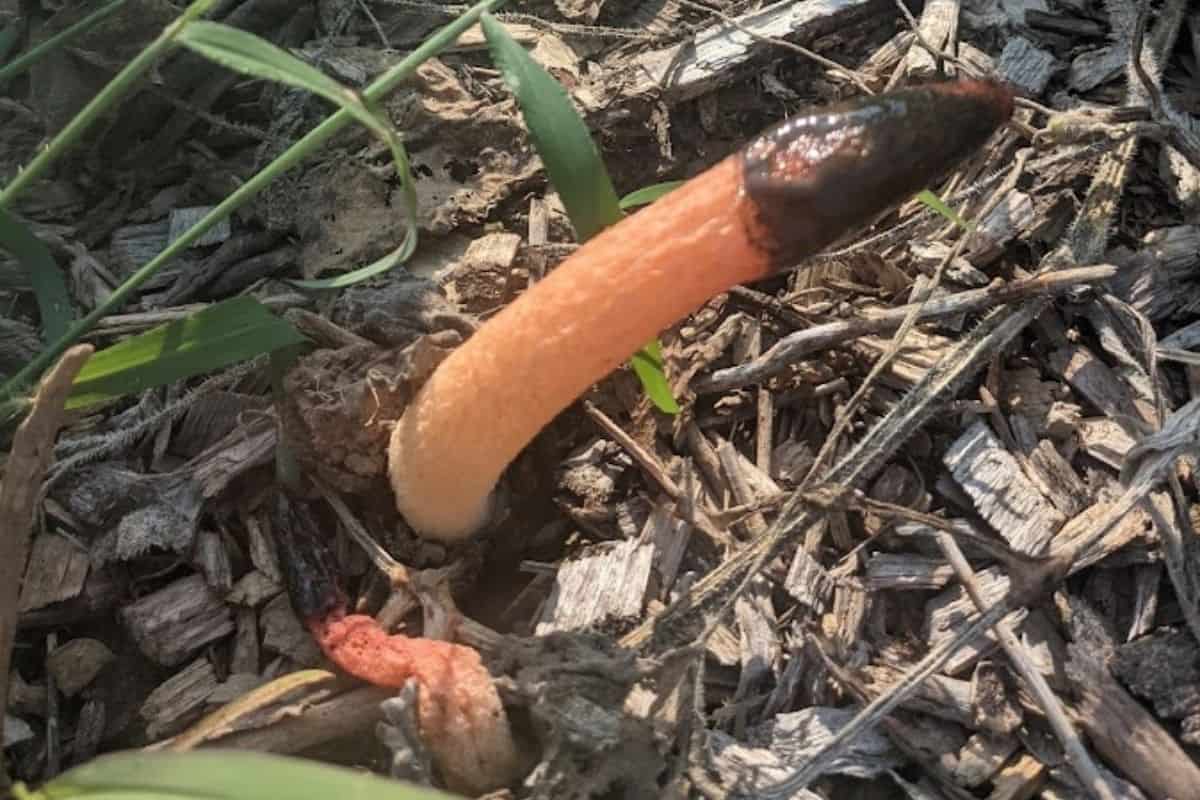Amidst the verdant tapestry of nature, there exists an enigmatic and unwelcoming guest: the stinkhorn mushroom. Its deceptive appearance, resembling an elongated phallus, conceals a pungent odor that has earned it the unsavory title of the “devil’s dipstick.” If your garden or surrounding environment has fallen prey to this olfactory assault, fear not. This comprehensive guide will equip you with the knowledge and strategies necessary to effectively eliminate these malodorous fungi.

Image: www.wikihow.com
Understanding the Nature of Stinkhorn Mushrooms
Stinkhorn mushrooms belong to the genus Phallus, and their distinctive shape and pungent aroma are evolutionary adaptations designed to attract insects. Once these unsuspecting creatures alight upon the mushroom’s fruit body, they unwittingly transport its spores far and wide through their feces.
The stench emitted by stinkhorn mushrooms is a result of a volatile compound called methyl mercaptan, which is similar to the odor produced by rotten meat or sewage. This nauseous aroma serves as a potent deterrent to most animals, but it is a beacon for flies and carrion beetles.
Effective Elimination Techniques
Eradicating stinkhorn mushrooms from your environment requires a multi-pronged approach. Here are several proven methods:
-
Manual Removal: The most straightforward method is to manually remove the mushrooms by gently picking or digging them out. Ensure you retrieve the entire root system to prevent regrowth.
-
Chemical Control: Selective herbicides containing trifluralin or imazalil can be used to kill stinkhorn mushrooms. Follow the instructions on the product label carefully and apply it sparingly to avoid affecting desirable plants.
-
Mulching: A thick layer of organic mulch, such as bark or wood chips, can suppress the growth of stinkhorn mushrooms by blocking sunlight and creating an inhospitable environment for their spores.
-
Soil pH Adjustment: Stinkhorn mushrooms thrive in acidic soil conditions. Raising the pH level of your soil by adding lime can create an unfavorable environment for their growth.
-
Beneficial Nematodes: Certain species of beneficial nematodes, such as Steinernema feltiae, can parasitize and kill stinkhorn mushroom larvae. Apply these nematodes to the infested area according to the manufacturer’s instructions.
Expert Insights and Actionable Tips
To enhance your eradication efforts, consider the insights of experts in the field:
-
Dr. Matthew Parker, a plant pathologist at the University of California, Davis, recommends combining manual removal with chemical control for maximum effectiveness.
-
George Cunningham, an arborist and plant health specialist at Bartlett Tree Experts, advises burying stinkhorn mushrooms deep underground to prevent the dispersal of spores.
-
Remember: patience is key. Eliminating stinkhorn mushrooms may require repeated applications of control methods over several seasons to break the reproductive cycle of these resilient fungi.

Image: www.backyardgardenlover.com
How To Get Rid Of Stinkhorn Mushroom
Conclusion: Reclaiming Your Environment
By implementing the strategies outlined in this comprehensive guide, you can effectively eliminate stinkhorn mushrooms from your garden or surrounding environment. Remember, consistency and persistence are crucial for long-term success. Once these malodorous fungi are eradicated, you can reclaim your outdoor space and enjoy the fresh air without the annoyance of their pungent presence.